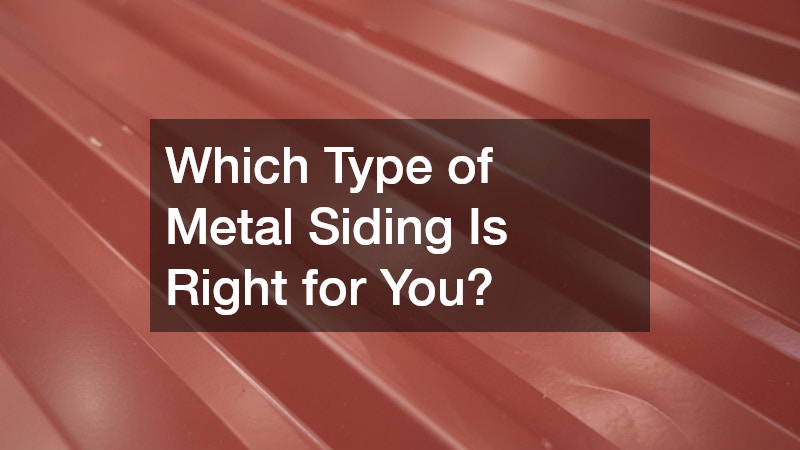
Metal siding has come a long way from the plain, utilitarian panels you might associate with barns or industrial buildings. Today, it’s a versatile, durable, and increasingly stylish choice for both residential and commercial properties. Whether you're going for a sleek modern look, a rustic farmhouse vibe, or something in between, there’s a metal siding style that fits the bill.
Video Source
In this article, we’ll explore the different types of metal siding available—from corrugated panels to standing seam systems and beyond. You’ll learn the pros and cons of each style, where they work best, and what factors to consider when choosing the right option for your home or building project.
Metal siding comes in several styles, including aluminum, steel, and corrugated designs. Aluminum siding is lightweight and resistant to rust, making it a popular choice for many homeowners. Steel siding, while heavier, offers greater strength and durability, particularly in areas prone to severe weather.
Corrugated metal siding is often used for both residential and commercial applications. This type of siding features a wavy profile, which not only adds visual interest but also provides structural strength. Each of these materials has unique properties that can enhance the overall look and functionality of your building.
Ultimately, when choosing the type of metal siding that suits your needs, consider your local climate, aesthetic preferences, and the maintenance requirements of each material. Your choice will significantly impact the longevity and efficiency of your home’s exterior.
One of the most significant advantages of metal siding is its durability. Metal materials are resistant to rot, pests, and harsh weather conditions, ensuring your home remains protected for years. This longevity also translates to lower replacement costs over time, making it a wise investment.
Additionally, metal siding requires minimal maintenance compared to traditional materials like wood. A simple wash with soap and water is typically sufficient to maintain its appearance. Many metal siding options also come with finishes that resist fading, chalking, or peeling, further reducing upkeep.
Energy efficiency is another key benefit of metal siding. Many products feature reflective surfaces that help to regulate indoor temperatures, potentially lowering heating and cooling costs. When combined with proper insulation, metal siding can significantly enhance your home’s energy performance.
When selecting metal siding, start by considering your home’s architectural style and color palette. Choosing a siding material with a finish that complements or contrasts attractively with your existing structure can transform the overall aesthetic. Don’t forget to account for the neighborhood trends to maintain a cohesive look.
Next, consider the practicality of each type of metal siding. Factors like your local climate and environmental conditions should influence your decision. For example, areas with high humidity may benefit from aluminum siding’s resistance to rust, while regions prone to hail may find steel siding more suitable for its strength.
Finally, think about your budget and the total cost of installation. While some metal siding materials may have a higher upfront cost, their longevity and lower maintenance can provide savings in the long run. Always consult with a professional to get a detailed estimate that includes materials and labor.
The cost of metal siding can vary significantly depending on the material you choose. For instance, aluminum siding typically ranges from $3 to $6 per square foot, while steel siding may cost between $4 to $8 per square foot. Corrugated metal siding offers a more economical option, often costing around $2 to $4 per square foot.
Installation costs are another factor to consider, as they can vary based on your location, the complexity of the installation, and the contractor you hire. Generally, installation can add anywhere from $2 to $5 per square foot to your overall expenses. It's essential to get quotes from multiple contractors to ensure you're getting a competitive price.
When planning your budget, also consider potential hidden costs, such as removing old siding or additional materials needed for insulation. Understanding the complete financial picture will help ensure your metal siding project goes smoothly without unexpected expenses. By thoroughly researching and preparing, you can confidently invest in the right siding option for your needs.
